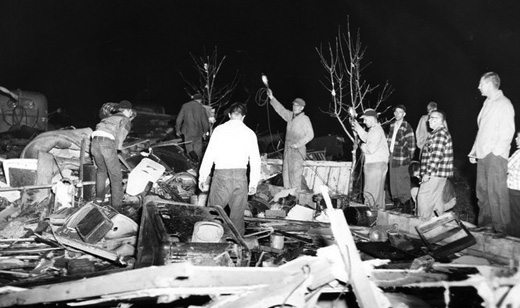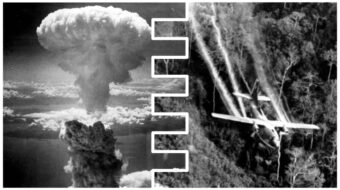
On April 3, 1956, the western half of the Lower Peninsula of Michigan was struck by a deadly F5 tornado.
Known as the Hudsonville-Standale Tornado, it was part of a large, deadly outbreak of 49 tornadoes that affected the Great Plains, parts of the South, and the upper Midwest. The Hudsonville-Standale tornado killed 18 and injured 340.
Homes in the Hudsonville area were cleanly swept away from their foundations, with only small pieces of debris recovered in some locations. Vehicles nearby were tossed hundreds of yards and mangled beyond recognition. The high winds heaped debris into rows and piles, and hundreds of trees were snapped and debarked.
The National Oceanic and Atmospheric Administration (NOAA) reported: “The tornado moved across the ‘muck’, a dark soil that consists of the silt of an old riverbed. The tornado picked this soil up and plastered everything in its path with it, including people, to the extent that many of the injured were unrecognizable even to their neighbors.”
On April 1, 1979, President Jimmy Carter signed the executive order that created the Federal Emergency Management Agency (FEMA). Their website lists common-sense precautions and preparations as we enter tornado season.
Photo: Searching for survivors and victims. West Michigan Tornadoes of April 3, 1956 Facebook page.










